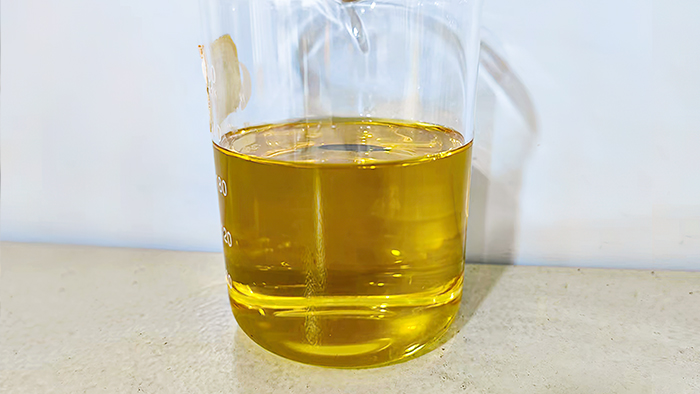biodiesel
Biodiesel is produced from animal and vegetable oils, recycled kitchen waste oil, and other raw materials. It is a renewable and green energy source with significant advantages
contact us
brief introduction
Biodiesel is produced from animal and vegetable oils, recycled kitchen waste oil, and other raw materials. It is a renewable green energy source with significant advantages
1 Has excellent environmental characteristics: Biodiesel and petrochemical diesel have lower sulfur content, which can greatly reduce sulfur dioxide and sulfide emissions after use. Biodiesel does not contain aromatic compounds that cause environmental pollution, and the damage to human health from combustion exhaust is lower than that of petrochemical diesel. At the same time, it has good biodegradability.
2 Excellent lubricity: Biodiesel has better lubrication performance than diesel: it can reduce the friction loss of the engine fuel supply system and cylinder liner, increase the service life of the engine, and indirectly reduce the cost of the engine. Experimental results have shown that adding 1.0% biodiesel reduces the wear spot diameter of ETS kerosene from 675 microns to 294 microns, and the wear spot diameter of D2 diesel from 531 microns to 233 microns.
3 Good safety performance: Biodiesel has a flash point of over 130 ℃, far higher than petrochemical diesel. It is not a hazardous fuel and has obvious advantages in transportation, storage, and use.
4 Excellent combustion performance: Biodiesel has a higher cetane number than diesel (generally between 49-52), therefore it has better combustion resistance when used, and higher compression ratio engines can be used to improve its thermal efficiency.
5 Renewable and Degradable: Biodiesel is a renewable energy source that has good biodegradability and is easily decomposed by microorganisms in the environment.
6 Adaptability and economy: The chemical properties of biodiesel allow it to be mixed with any distillate or petrochemical diesel, including light fuels such as aviation fuel, kerosene, light diesel, automotive diesel, and fuel oil. Biodiesel and petrochemical diesel can be miscible in any proportion, and when used in combination with petrochemical diesel in a certain proportion, it can reduce fuel consumption and exhaust pollution. The investment in biodiesel blending system is low, and the engine, refueling equipment, storage equipment, and maintenance equipment of the original diesel engine do not require or require minimal modifications.
1 Has excellent environmental characteristics: Biodiesel and petrochemical diesel have lower sulfur content, which can greatly reduce sulfur dioxide and sulfide emissions after use. Biodiesel does not contain aromatic compounds that cause environmental pollution, and the damage to human health from combustion exhaust is lower than that of petrochemical diesel. At the same time, it has good biodegradability.
2 Excellent lubricity: Biodiesel has better lubrication performance than diesel: it can reduce the friction loss of the engine fuel supply system and cylinder liner, increase the service life of the engine, and indirectly reduce the cost of the engine. Experimental results have shown that adding 1.0% biodiesel reduces the wear spot diameter of ETS kerosene from 675 microns to 294 microns, and the wear spot diameter of D2 diesel from 531 microns to 233 microns.
3 Good safety performance: Biodiesel has a flash point of over 130 ℃, far higher than petrochemical diesel. It is not a hazardous fuel and has obvious advantages in transportation, storage, and use.
4 Excellent combustion performance: Biodiesel has a higher cetane number than diesel (generally between 49-52), therefore it has better combustion resistance when used, and higher compression ratio engines can be used to improve its thermal efficiency.
5 Renewable and Degradable: Biodiesel is a renewable energy source that has good biodegradability and is easily decomposed by microorganisms in the environment.
6 Adaptability and economy: The chemical properties of biodiesel allow it to be mixed with any distillate or petrochemical diesel, including light fuels such as aviation fuel, kerosene, light diesel, automotive diesel, and fuel oil. Biodiesel and petrochemical diesel can be miscible in any proportion, and when used in combination with petrochemical diesel in a certain proportion, it can reduce fuel consumption and exhaust pollution. The investment in biodiesel blending system is low, and the engine, refueling equipment, storage equipment, and maintenance equipment of the original diesel engine do not require or require minimal modifications.

 ZN
ZN
 EN
EN


